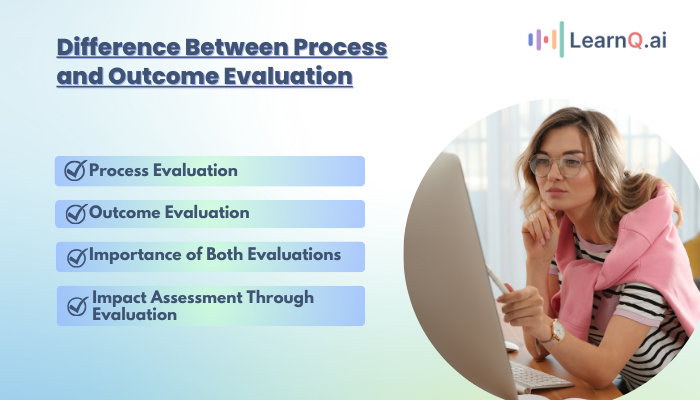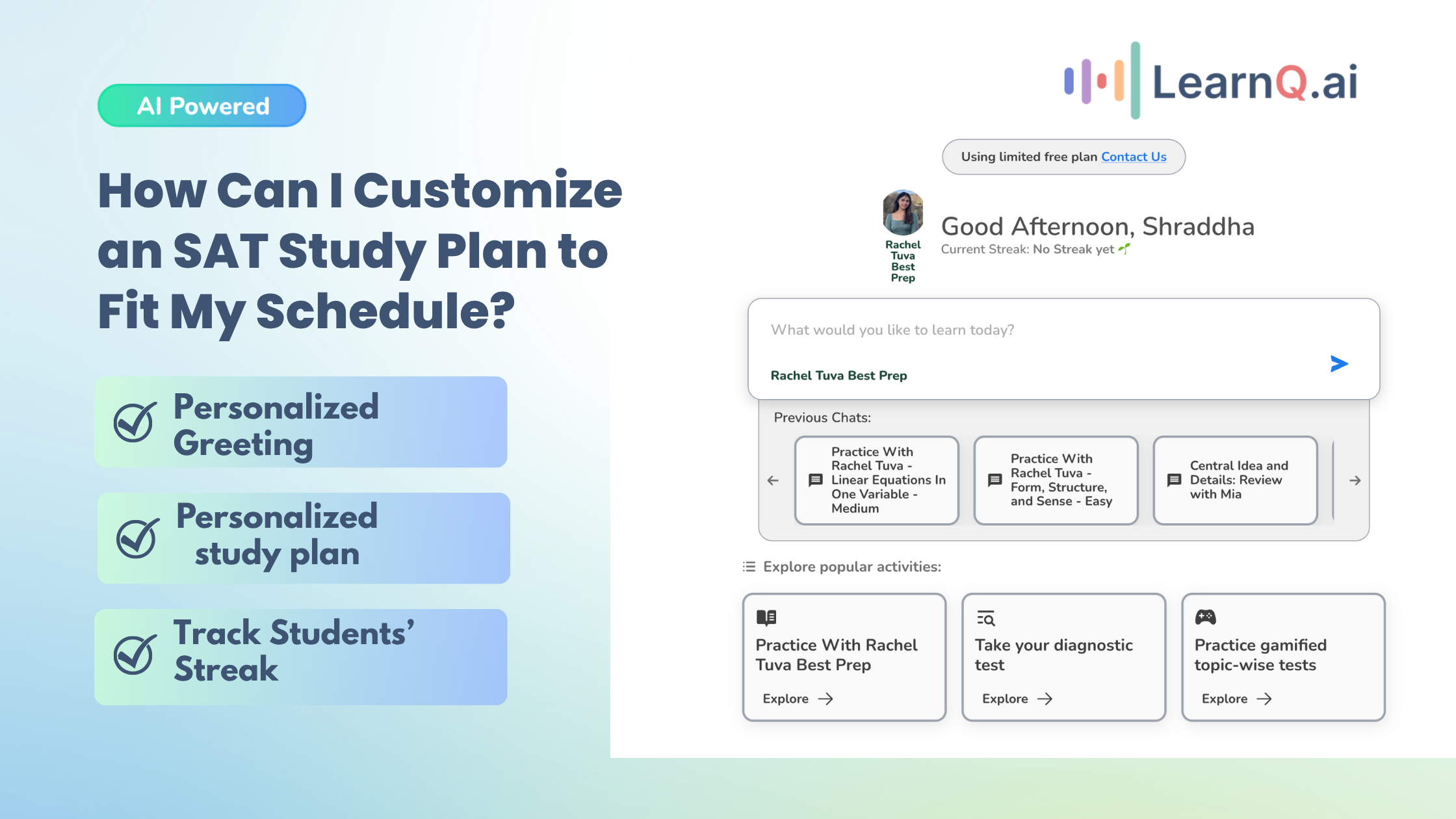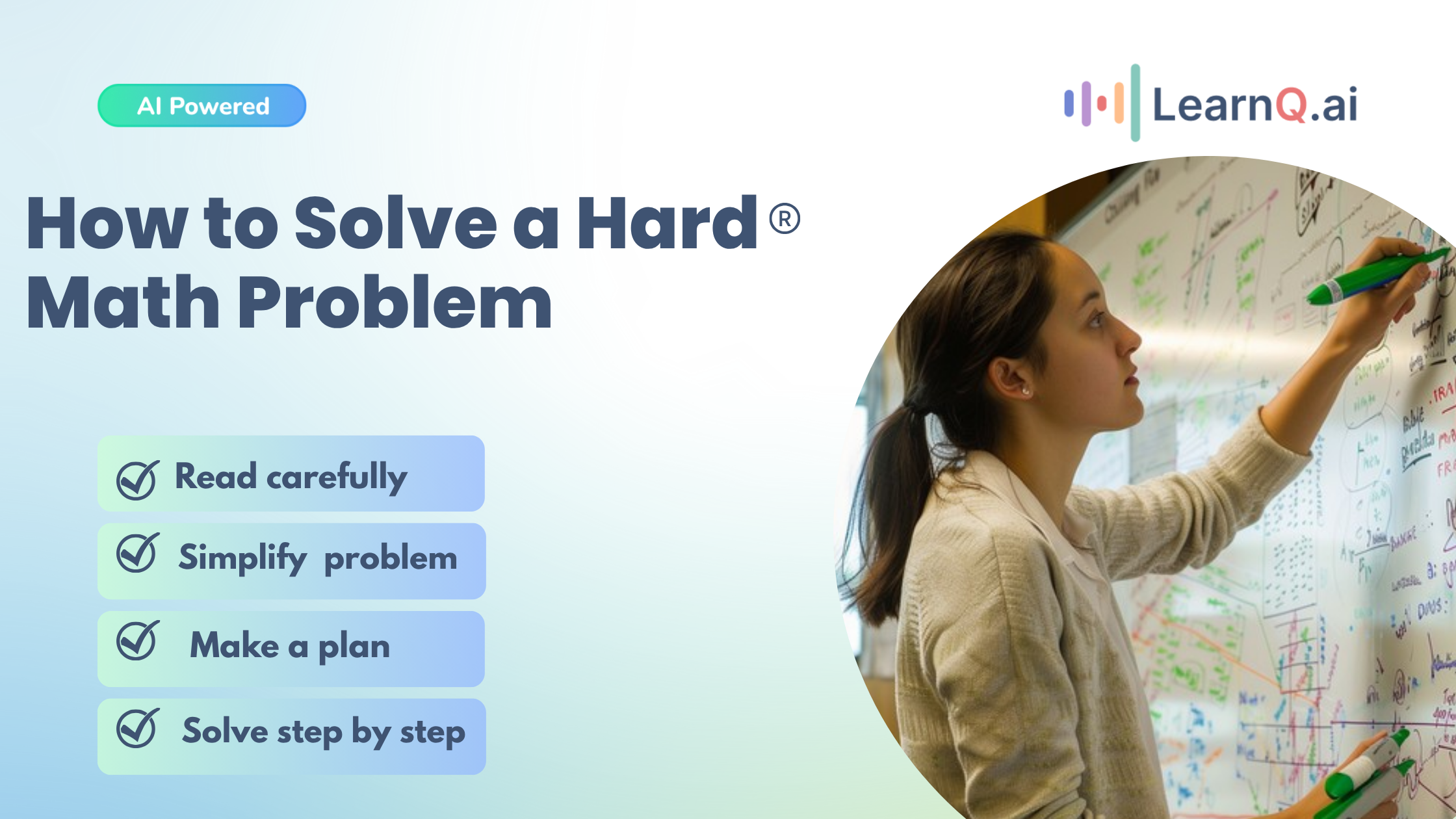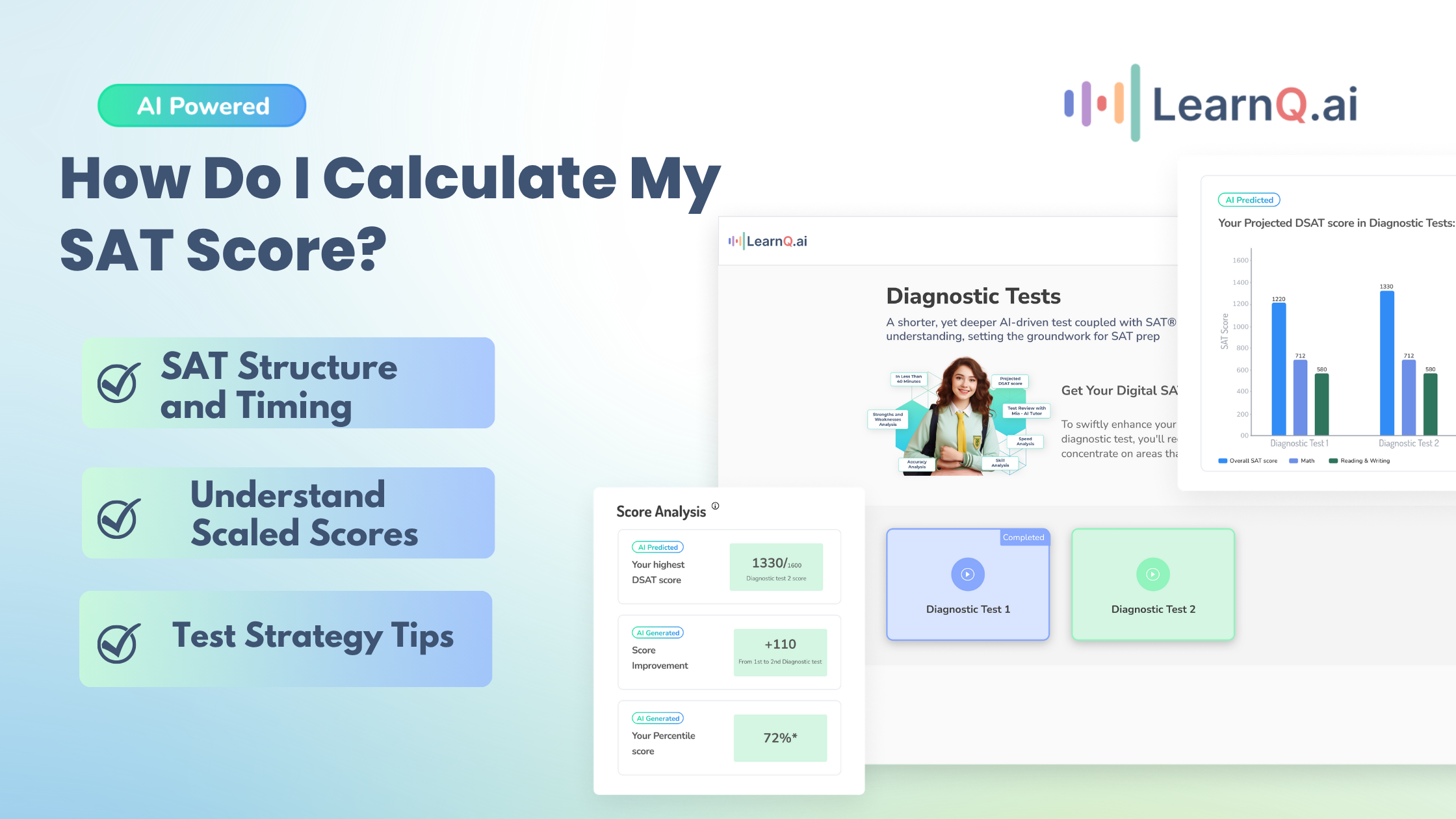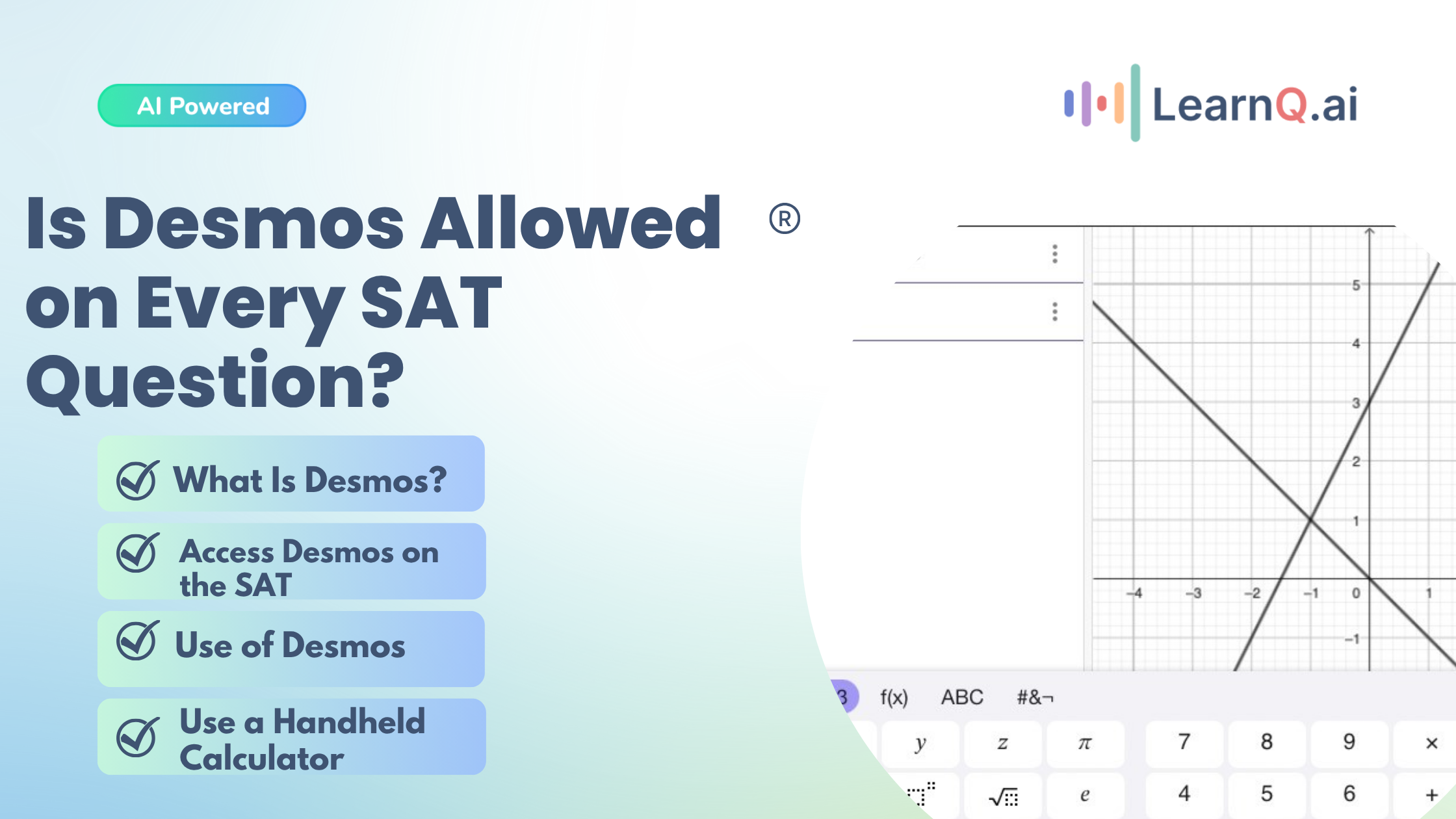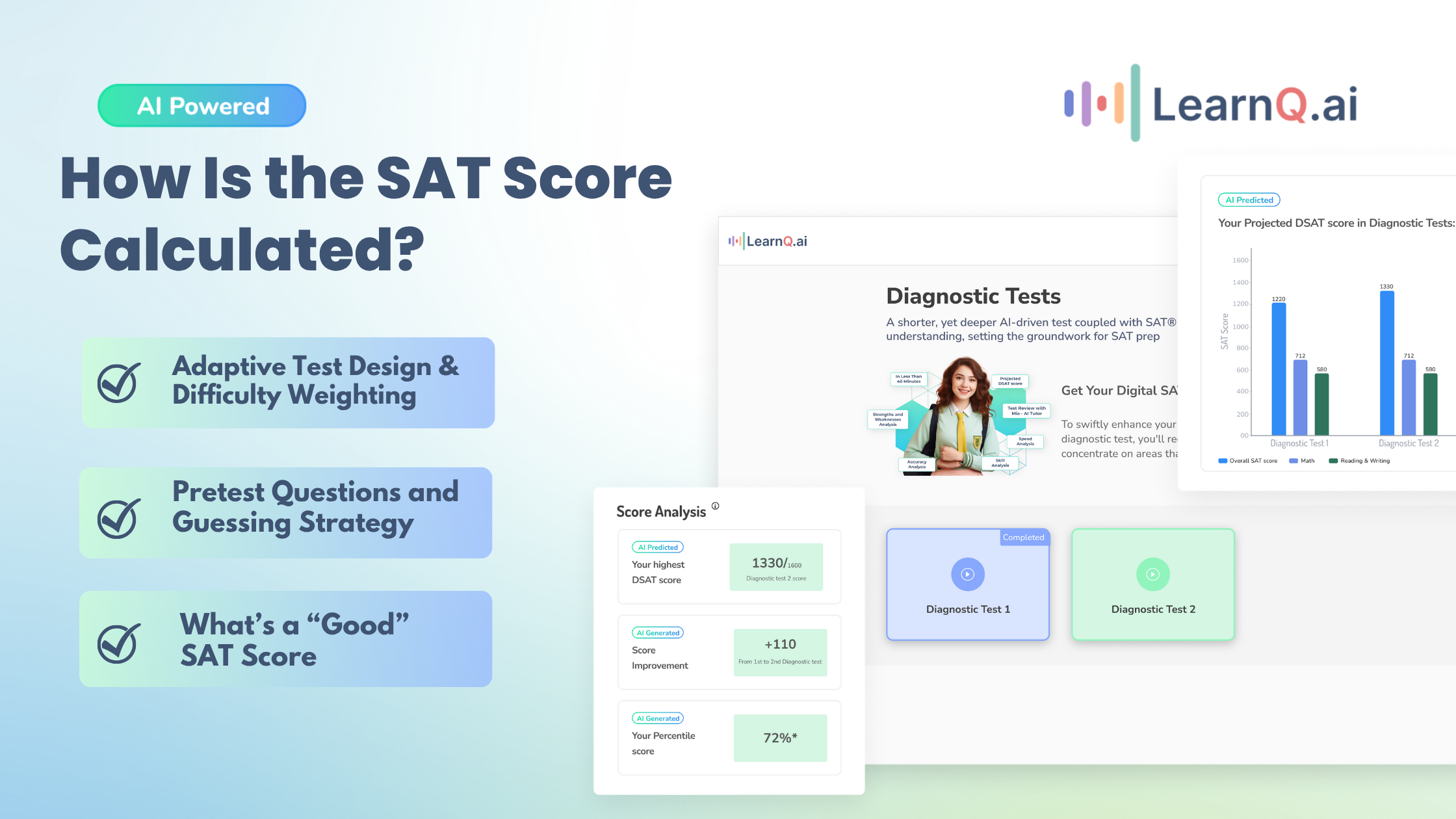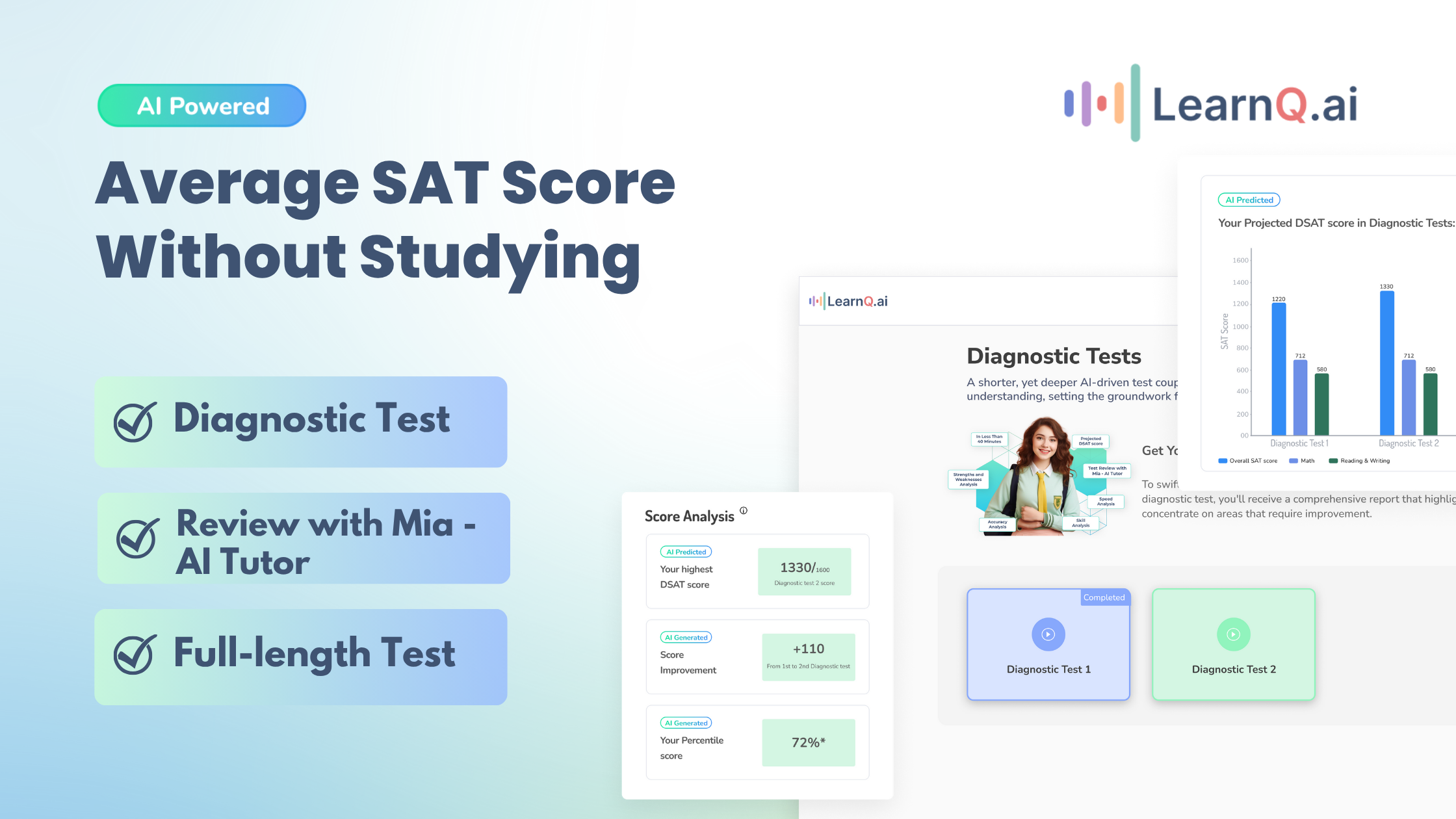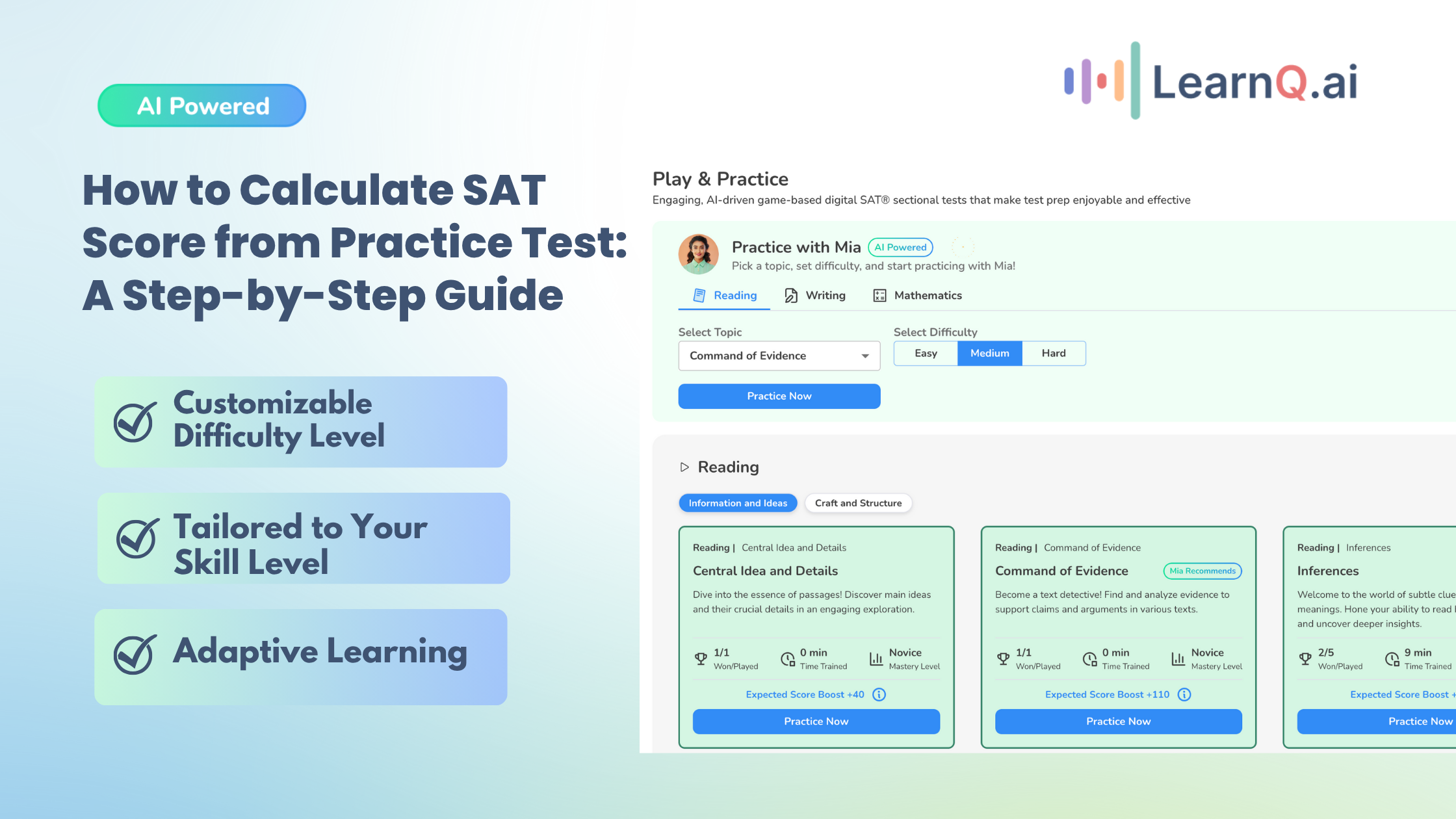Every program you run, whether in education, business, or community work, has a purpose. But how do you know if it’s running effectively or making a difference?
That’s where evaluations come in; they give you insights into what’s working, what needs improvement, and how to maximize your impact.
Two essential types of evaluation, process and outcome, are especially valuable. Process evaluation helps you understand how your program operates, while outcome evaluation shows what results it’s achieving.
LearnQ.ai is Powered by VEGA AI—Is your Institute Next?
Give students a Duolingo-style test-prep platform with Shopify-level customization for tutors and institutes.
In this blog, you’ll learn about these two types of evaluations and see how they can help you make better decisions, improve effectiveness, and reach your goals.
Whether managing a program, community initiative, or team, understanding process and outcome evaluations drives meaningful, lasting change.
Understanding Process and Outcome Evaluation
Understanding process and outcome evaluation helps you see how a program runs and whether it meets its goals.
This knowledge lets you make smart choices to improve the program and increase its impact.
Purpose of Evaluation
Evaluations help you see what’s working in a program and what needs fixing. When it comes to understanding program success, two main types of evaluation are key:
Process Evaluation
Process evaluation helps you see how your program is running. It checks if each step is completed correctly, ensures resources are used wisely, and confirms the program follows its plan.
Think of it as a way to see if everything behind the scenes is running smoothly.
Enhance your Digital SAT study routine with AI-driven insights and personalized practice tests.
Outcome Evaluation
This type focuses on results. It measures whether the program met its goals. Did it create the impact you wanted?
For example, did students learn better, or did engagement improve?
Both types give you valuable insights into your program’s effectiveness, helping educators and institutions understand if the program is on track and achieving its intended goals.
Role in Program Improvement
Both process and outcome evaluations are essential for making improvements. Here’s how they help:
- Process Evaluation for Immediate Changes: This type of evaluation gives you real-time feedback on delivery, participation, and resource use. It helps you adjust as you go. If something isn’t working, you can make quick changes to keep the program effective.
- Outcome Evaluation for Measuring Impact: Outcome evaluation shows if the program made a real difference. It helps you understand the long-term impact, justify resources, and decide if the program should be expanded or refined.
Now that you have a clear picture of process and outcome evaluations, let’s look closer at each one, starting with process evaluation.
Process Evaluation
Let’s examine how process evaluation helps ensure a program’s activities and services run as planned.
- Overview and Function
Process evaluation examines how a program is being run. It checks whether all the planned activities, services, and steps are happening as they should.
This type of evaluation ensures that the program is set up correctly and that everything is on track to meet its goals.
Key points:
- Program Delivery: Are activities and services happening as planned?
- Resource Use: Is time, money, and effort being used effectively?
- Implementation Quality: Is the program meeting expected standards?
- Monitoring and Feedback
Process evaluation provides ongoing feedback. This allows you to see what’s working well and where adjustments might be needed as the program progresses.
It’s like having a guide that lets you make quick fixes to improve the program’s effectiveness.
Consider:
- Real-Time Adjustments: Fix issues as they come up.
- Engagement Checks: Are people participating and responding as expected?
- Resource Allocation: Make sure resources are focused on areas that need them most.
- Identifying Barriers
Process evaluation helps spot any obstacles that might slow the program down or reduce its impact.
These could include resource shortages, low participation, or unexpected issues. You can adjust and keep the program on course by identifying these early.
Common barriers include:
- Logistical Issues: Challenges with timing, materials, or support.
- Engagement Gaps: Low levels of interest or participation from the target audience.
- Program Gaps: Missing or incomplete parts of the program.
- Practical Examples of Evaluation Questions
Process evaluation often uses specific questions to check the program’s progress, such as:
- Are all the planned activities being carried out?
- Is the target audience participating as expected?
- Are there any challenges affecting the program’s progress?
These questions give a clear view of the program’s progress and help ensure it stays on the right track.
With process evaluation covered, let’s move on to outcome evaluation.
Outcome Evaluation
Let’s explore how outcome evaluation measures a program’s success in achieving its intended results.
- Measuring Impact
Outcome evaluation looks at whether your program achieved its intended results.
For example, if the goal were to improve student grades, outcome evaluation would measure if and how much those grades improved after the program.
- Before and After Comparisons
Outcome evaluation often compares data from before and after the program to see its impact.
For instance, if your goal was to increase job placement rates, you’d compare participants’ placement rates before and after they completed the program.
Sometimes, control groups are also used to see the difference between those who went through the program and those who didn’t.
- Effectiveness and Change
Outcome evaluation focuses on whether the program led to real, desired changes.
For example, if a program aimed to help people exercise more, outcome evaluation would measure if participants increased their exercise levels over time.
- Question Examples
Outcome evaluation often uses specific questions to measure effectiveness, such as:
- Did participants achieve the improvements the program aimed for? (e.g., better grades, new skills)
- What measurable changes happened because of the program? (e.g., increased job placements, improved health)
- Were these results different for those who didn’t go through the program?
These questions give you a clear view of the program’s impact and help confirm if it met its goals.
Now that you know what outcome evaluation is, let’s compare it to process evaluation and consider the unique value each brings.
Key Differences Between Process and Outcome Evaluation
The table below provides a clear, side-by-side view of how process and outcome evaluations differ, allowing you to decide which type best aligns with your program goals.
| Aspect | Process Evaluation | Outcome Evaluation |
| Focus Area | Examines the implementation and delivery of the program. | Assesses the results and effectiveness of the program. |
| Purpose | Provides insights into how well the program components are executed. | Measures the extent to which program goals and outcomes are achieved. |
| Feedback vs. Results | Focuses on gathering feedback to improve program operations. | Targets the actual results, assessing if intended goals were met. |
| Key Metrics | Looks at participant engagement, adherence to schedules, and resource usage. | Analyzes changes in knowledge, behavior, or conditions post-program. |
| Use in Decision-Making | Helps refine the process for better delivery and efficiency. | Based on effectiveness, it informs decisions on program continuation, expansion, or redesign. |
| Timing of Evaluation | Conducted during the program implementation phase. | Conducted after program completion to assess final outcomes. |
| Stakeholder Focus | Relevant to program implementers, managers, and facilitators. | Relevant to funders, policymakers, and stakeholders interested in long-term impact. |
Now that you understand the key differences, let’s explore why both process and outcome evaluations are essential for effective program management.
Also read: AI Tools Examples Transforming Education
Importance of Both Evaluations
Using both evaluations helps you fully understand how a program works. Let’s look at how each one adds value to make programs stronger and more effective.
Comprehensive Program Insight
Using both process and outcome evaluations gives you a full view of your program’s performance, each serving a specific purpose:
- Process evaluation looks at how well day-to-day operations are running.
- Outcome evaluation measures whether the program is achieving its intended results.
Together, these evaluations ensure you understand both how the program operates and what impact it has, helping you identify areas of success and those needing improvement.
Informed Decision-Making
Combining both evaluations enables smarter, more strategic decision-making:
- Identify strengths and weaknesses: Process evaluation highlights operational areas to improve, while outcome evaluation shows the program’s impact.
- Guide resource allocation: Insights from both help you make informed choices about where to focus time, money, and resources.
- Support future planning: Data from these evaluations ensures you can plan confidently, making the program more effective and efficient.
Continuous Improvement
Ongoing evaluations create a feedback loop that fuels continuous improvement:
- Spot areas for refinement: Process evaluation pinpoints where operations can be enhanced.
- Track progress: Outcome evaluation shows if adjustments lead to better results.
- Adapt over time: Regular insights keep your program relevant, effective, and impactful.
Accountability and Transparency
Both evaluations enhance accountability and transparency, which builds trust with stakeholders:
- Clear documentation: Process evaluation confirms that you’re following the intended approach, while outcome evaluation verifies that the program creates a measurable impact.
- Show value: Demonstrating both how the program works and what it achieves reassures funders and stakeholders that resources are well-used.
Enhanced Stakeholder Engagement
A balanced evaluation approach strengthens connections with stakeholders:
- Provide data-driven updates: Sharing evaluation results helps communicate progress and impact effectively.
- Align expectations: Stakeholders appreciate seeing both operational successes and program impact, keeping everyone on the same page.
- Build future support: Transparent results often lead to stronger backing for current initiatives and potential future expansion.
With a clear grasp of both process and outcome evaluations, let’s explore how these tools can drive impactful assessments and elevate program success.
Enhance your Digital SAT study routine with AI-driven insights and personalized practice tests.
Impact Assessment Through Evaluation
Evaluating a program’s process and outcome gives a complete picture of its impact, helping you refine strategies, improve resource use, and ensure long-term success.
Assessing Program Impact
Evaluations are key to understanding the full impact of your program. By examining both process and outcome, you can:
- See how well resources are being used.
- Identify what’s working and what needs improvement.
- Ensure that your efforts are delivering meaningful results.
This helps you focus on activities that truly make a difference, maximizing the value of your resources.
Supporting Program Goals
Evaluations don’t just measure results; they help you stay on track with your program’s goals. Through regular assessment, you can:
- Adjust strategies based on real-time feedback.
- Adapt to changes in needs or expectations.
- Keep your program relevant and effective.
This flexibility allows you to respond to challenges and stay aligned with your goals.
Enhancing Management and Systems
A well-rounded evaluation process also strengthens your overall program management. By combining process and outcome evaluations, you can:
- Improve how resources are managed.
- Confirm that key goals are being met.
- Make informed decisions to refine systems and processes.
With these insights, your team can improve efficiency and create sustainable success for the program.
LearnQ.ai is powered by VEGA AI—Is your institute next?
Offer students a Duolingo-style test-prep platform with Shopify-level customization for tutors and institutes.






Conclusion
To wrap up, process and outcome evaluations each play a unique role in helping programs succeed. Process evaluation focuses on how the program is running, ensuring all parts work smoothly.
On the other hand, outcome evaluation looks at whether the program is achieving the results you aim for. Together, they provide a full picture that supports ongoing improvement and effectiveness.
Using both types of evaluations helps you understand how and why your program works, making it easier to make the right adjustments along the way.
Tools like LearnQ can enhance the learning experience for students, teachers, institutions, and program managers.
With its advanced analytics and AI-driven insights, LearnQ can help you get deeper insights and make smarter decisions to boost the impact of both evaluations.
Try LearnQ for free to support your evaluations and drive greater program success.
Also read: How to get started with LearnQ.ai for FREE?

